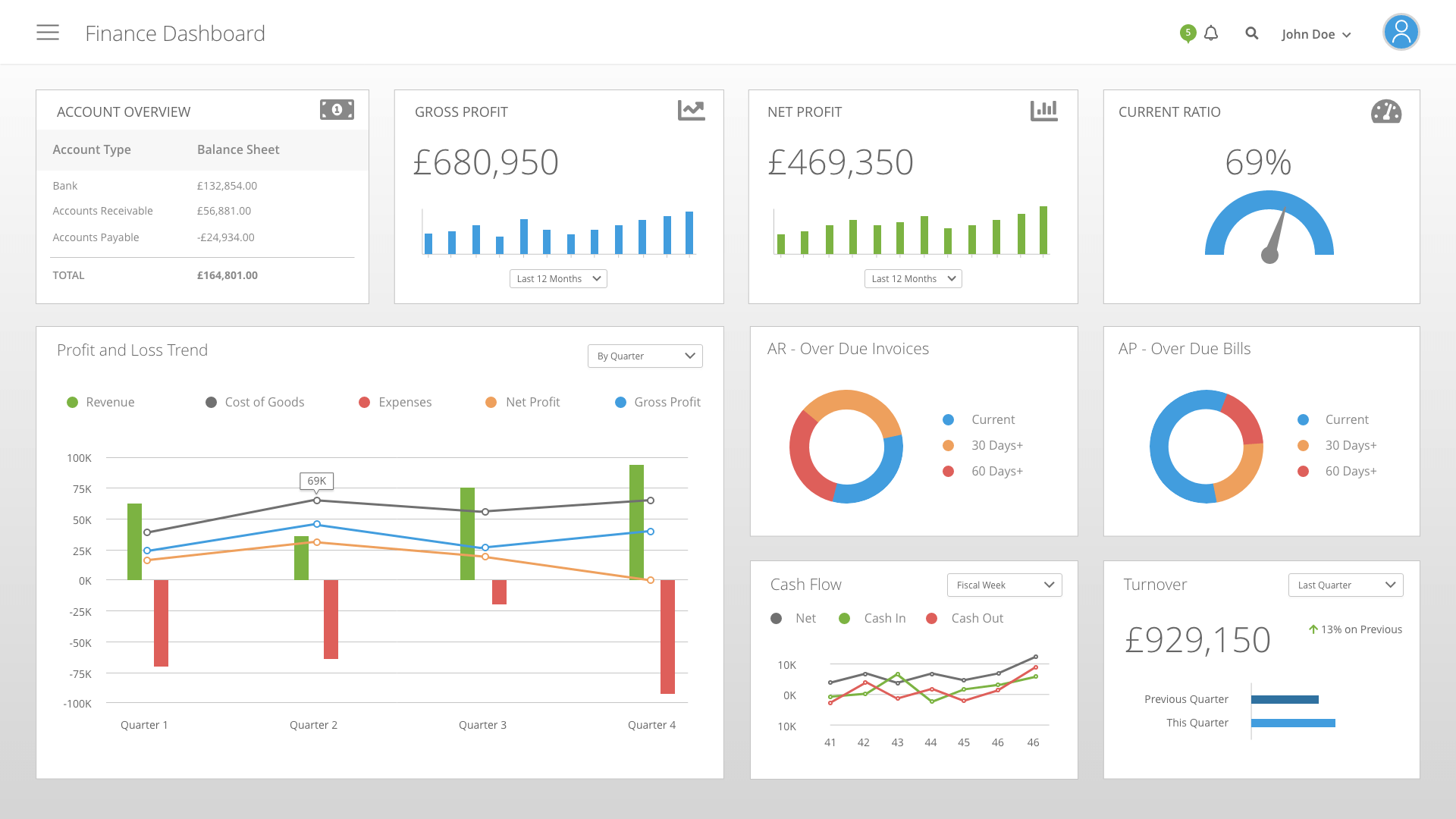- Improving productivity in manufacturing operations
- How to improve operational efficiency in manufacturing
- Keeping senior managers informed
- Automating customer management and finance
- Adding exception reporting to stock management
- Purchase ledger process automation
- Real-time information for the sales team
- 19 manufacturing process improvement ideas
- 10 benefits of automation in manufacturing
- Frequently Asked Questions
Improving productivity in manufacturing operations
If you are looking at ways to improve operational efficiency in manufacturing, you’re not alone. Operational efficiency is a challenge faced by many manufacturing organisations. Challenges and pressures are increased by having to work to tight deadlines and, as a result, the productivity of both onsite and offsite employees can be affected by the availability of time-critical information. Adding business activity monitoring system integration and automation capabilities to manufacturing software solutions helps manufacturers become lean and more profitable by automating the back office tasks that cost time and money.
How to improve operational efficiency in manufacturing
Business process automation can help manufacturers improve operational efficiency by:
- Providing access to real-time data
- Eliminating manual effort from the report production process
- Alerting senior managers when delays occur
- Improving the invoicing process
- Enhancing customer service levels
- Proactively delivering support ticket information
Working in a commercial environment, where customer service and product quality is paramount, means that management and operational teams need to receive time-critical information quickly and efficiently. To combat the increasing challenges faced, manufacturing organisations are turning to intelligent automation solutions to save time and money across the business.
Business process automation (BPA) and business activity monitoring (BAM) improves operational efficiency in manufacturing by helping organisations to identify and rectify potential production issues earlier and more effectively, before they develop into serious bottlenecks.
“We are now able to be more responsive to changes and we have the capacity to scale our transaction volume well into the future without running into limitations.”
Thomas Jackson, Group Operations Manager, Jackson Industries
Keeping senior managers informed
Business activity monitoring enables operational teams to monitor and report on key data generated within their service application in real-time. In many instances, prior to automation, the monitoring of key client data is handled manually by senior managers. As a result, outstanding jobs within a service management application could lead to delayed invoicing, causing cash flow issues at a later stage.
The impact of an action in one department can lead to a significant bottleneck in another area of the business. In any organisation, business processes cross multiple departments and functions, and a delay in one area can affect activity in another. Where a service manager application relies on manual operations, for example to close down a job which has been completed, financial processing could be delayed further down the line.
Business process automation software allows senior management to have information relating to job completion delivered to them dynamically each day via email. As a result, invoicing is more efficient, which leads to fewer queries.
BAM software allows manufacturing organisations to achieve rules-driven, data-triggered email or SMS notifications which provide real-time updates or can be used as a mechanism to remind employees to complete tasks. Typical examples of rules-driven data alerts include:
- Low stock levels
- Aged debtors totalling X
- Compliance procedures not followed / complete
- Unauthorised discount levels
Automating customer management and finance
At the very heart of an organisation is the customer services department. It’s up to them to provide critical information that influence decisions throughout the business. For example, automating ‘contract due dates’ can have a significant impact on a business.
Business activity monitoring solutions enable a business to proactively monitor key data within a service management application, such as sending details of contracts which are 90, 60 or 30 days away from renewal. Automating this process means that service managers no longer have to spend time on administration, but can devote time to work closely with their customers. Additionally, renewal revenue and cash flows can be predicted and processed more efficiently.
“We have halved our response time when dealing with customer queries and, as a result, we have improved our customer service levels.”
John Mills, Operations Manager, Posturite
Finance departments in every business run a number of daily reports which can influence the decisions of senior managers. These reports are often crucial to the business, and their production and distribution involves time from a number of people. Intelligent business process automation provides the opportunity to increase productivity and reduce administration costs in report and document generation.
Within a manufacturing business, many finance departments run stock reports and monthly reconciliations manually, which can often result in administration errors. Business process automation allows reports to be generated and distributed automatically to provide an instant, positive impact in real-time, thus reducing reconciliation times.
Additionally, as another form of reporting, BAM dashboards are often used to display an overview of real-time information which can be accessed quickly and easily to aid decision making. For example, accounting and finance professionals can view a summary of financial transactions and statuses at a glance, whilst stock management teams can view stock levels, values and slow moving stock to aid production and procurement processes.

Manufacturing Process Improvement: Finance Business Activity Monitoring Dashboard Example
Adding exception reporting to stock management
The management of stock is an on-going activity for manufacturing organisations. With effective stock control having such a considerable impact upon production techniques, such as Just-in-Time (JIT), it’s critical for manufacturers to add exception reporting to its primary business system.
Being dynamically informed when stock levels fall below agreed levels provides stock controllers with detailed reports on sales orders placed on the system that could push fulfilment stock levels into a negative figure. This enables the business to respond quickly to getting a product on the production plan for manufacture or buying new materials.
Purchase ledger process automation
The procurement of materials is crucial to companies of all sizes operating within the manufacturing arena. With all input costs directly attributing to the costs of the final product, it is critical that manufacturers have stringent procedures regarding the purchasing process.
To ensure that all purchases are in line with company agreements the traditional approach has been to manually match any purchase ledger invoices against expected cost. Naturally, this manual process involves a number of paper chases and is prone to delays and administration errors, such as purchasing materials above agreed levels.
Due to being reliant on manual administration and utilising employee time there is an added risk of overspend which is often overseen as a hidden cost. Therefore, business process automation can improve the manufacturing process further by reducing manual paper chasing.
As an automated process, organisations will be able to implement ‘checks’ to identify any differences between invoice value and expected cost, which can be created automatically as an HTML report and sent to the management, accounting, buyer and purchase ledger departments to action a workflow approval. This saves the business time and money and reduces the risk of incorrect decision making.
Real-time information for the sales team
Regardless of industry, the availability of real-time information is critical to all sales forces. Without real-time information, existing customers can suffer from poor service or sales representatives may miss out on sales opportunities.
Manually creating and distributing sales reports to field-based sales teams is an inefficient use of employee time and an added cost that can be streamlined and removed. In many cases, a manual report creation process can result in out-of-date information that is not relevant to a sales team once the report is distributed.
Report automation provides sales teams with real-time sales information that is automatically identified, formatted and distributed without employee intervention – error free. Real-time sales reports can include customer turnover, daily sales orders, orders waiting to be dispatched or invoices processed today; all relevant information for a field-based sales representative.
“Automating daily reports has removed a large amount of routine administration from colleague workloads whilst ensuring visibility of business critical information.”
Kerstin Günther, Internal Sales Manager, Oculentis
19 manufacturing process improvement ideas
Irrespective of the size of your business or industry specialism, the following business process automation examples provide a clear indication on the many different ways on how to improve operational efficiency in manufacturing through business process automation and business activity monitoring.
- Web portal software e.g. supplier / customer portals
- ERP and accounting software integration, e.g. SAP, Sage, Microsoft Dynamics. Access, SYSPRO, Epicor and others
- Automated calculation and distribution of KPI reports, such as productivity levels and waste % per product line
- eCommerce integration, e.g. Shopify, Magento, BigCommerce, Amazon, eBay etc.
- Event-driven information on stock levels to assess impact upon production techniques, such as Just-In-Time (JIT)
- Automatic timesheet reminders sent to employees
- Automated reports for showing goods / orders to manufacture
- Notifications for when back-ordered stock has been received
- Courier integration with all leading services, e.g. DHL, DPD, FedEx, Hermes, Parcelforce etc.
- Warning notifications for when goods due in ‘today / this week’ have not been received
- Automated utility usage monitoring and warnings for usage deviations against the norm
- Monitoring of equipment performance with alerts sent via SMS message
- Automated service reminders on manufacturing equipment
- Automatic notifications to other departments when manufacturing of key products are complete
- Automated production and delivery of documents required by law, e.g. safety data sheets required by REACH legislation
- Checking manufacturing progress is adequate to hit target delivery dates
- Regular production of statistics required by quality schemes, such as ISO and Six Sigma
- Out of hours notification sent to key personnel when the manufacture of key orders have been completed
- Automated credit control process
10 benefits of automation in manufacturing
Business process automation in manufacturing provides the opportunity to streamline day-to-day operations to improve cash flow, profitability and productivity. By removing employee-intensive manual back office tasks that cost time and money, manufacturers can become more efficient and profitable.
Common benefits achieved through the implementation of business process automation include:
- Ability to become more responsive to changes in the business
- Reduction of customer response query times
- Eradication of repetitive data entry
- Removal of manual report production
- Reduced time and costs
- Added ability to predict renewal revenue and cash flows
- Improved employee productivity
- Increased visibility into critical business information
- Improved decision making
- Enhanced IT infrastructure
Business Process Automation Next Steps
For more information on how to improve operational efficiency in manufacturing, download the brochure below or call us on +44 (0) 330 99 88 700.


